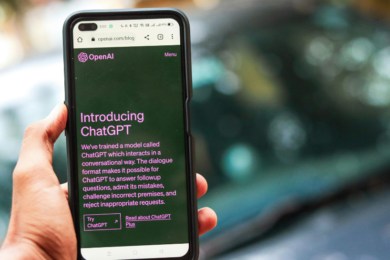Five Marketing Predictions for 2025
Jan 2, 2025By this point, most marketers have become accustomed to the never ending whirlwind of change and evolution in the digital…

In the modern online marketplace, consumers have one thing in abundance. Choice.
In contrast, consumers have one thing in sparsity. Patience.
So, what does this mean for businesses? Essentially it underlines the fact that the ability to captivate and retain an audience has never been more vital.
Bringing users to your website is one part of the battle, admittedly a hugely important part but if your traffic is disappearing faster than a toupee in a hurricane then it isn’t benefiting your business.
Even if your business has the best branding, best prices and the best quality products or services in your industry, the simple fact is, if users aren’t able to easily navigate your website, they’ll bounce and you can guarantee that your competitors will be ready and waiting with open arms. Annoying right?
The answer? User experience.
In this blog series, we will be discussing the importance of UX: how to identify areas of concern on your site, key tips to improve the UX of your website and ensuring that your site is mobile friendly, starting with how to utilise bounce and engagement metrics to spot pages on your site that may require UX improvement.

What is the bounce rate? How is it relevant to UX?
Well, if a landing page is slow to load, poorly laid out and doesn’t demonstrate a clear concise value proposition, users will typically leave within 15 seconds (being generous), without making any actions. When this happens the bounce rate of that particular page and the entire site, increases.
However, it’s not always as simple as ‘bounce rate = bad website’.
In-fact, some bounce rates can actually be a positive reflection of your site. On occasion, a user may simply find the information that they need and leave with no further action needed! Which isn’t necessarily a bad thing.
Bounce rate also differs by industry, for example, an Ecommerce retail website can expect to have a lower average bounce rate than a B2B service site.
The time for alarm when it comes to bounce rate is when a site or an individual page is at +60% (again, depending on the industry), 70% is above average and anything 80% or over is a clear indication that users are simply not engaged with your website, this could be down to lack of visuality, uninformative content, functionality issues and more.
With the recent roll out of GA4, the prominence of ‘bounce rate’ has been shifted slightly, with more emphasis now being placed instead on ‘engagement rate’ which is considered a more positive metric.
In short, engagement rate is the polar opposite of bounce rate, showing what percentage of users are conducting a ‘meaningful event’ while on your site.
Engagement rate helps us to identify content performance, measure user satisfaction and overall presents us opportunities for improvement.
GA4 considers an engaged session to include over 10 seconds of activity, consist of two or more page views or trigger at least one conversion event.
Rather than only telling us the pain points that users are finding, engagement rate tells us how users are interacting with our website, serving as a real time reflection on page relevance and UX factors.
As we can see, engagement rate stats provide us with a good indication into the strength of the UX on our site and allows us to optimise accordingly.

Both bounce rate and engagement rate metrics tell us an important story about how users interact with our website, allowing us to make data driven decisions and strategically create a seamless and engaging user experience.
Using the engagement and bounce rates in Google Analytics, we can review the performance of individual pages, allowing us to better understand which ones may or may not be resonating with our audience.
This tool also allows us to trace the user journey through our website, identifying high drop-off areas as well as pages that perform well, ensuring that we are optimising priority pages first.
If we have a landing page that receives a good amount of organic traffic yet at the same time has an excessively high bounce rate and low engagement, there are typically two main reasons for this drop off.
The first is that we may be attracting the wrong audience to our page, in which case we would need to further optimise our keyword and targeting strategies.
However, with tools such as HotJar or Clarity, we can delve further into the pages highlighted by our metrics review, utilising heat mapping technology to conduct a visual analysis of user behaviour on our site.
Typically, indications of poor user experience that this analysis may raise are
Form Abandonment
Limited Scroll Depth
Rapid or Repeat Clicks on Elements
Cold Spots
All of the above point to frustration from the user when they are interacting with our site, in turn causing them to bounce from the page and ultimately not convert.
Now that we understand how to definitively identify areas of weak UX using engagement and bounce rate metrics, we can finally begin optimising our site to improve user experience.
In fact, keep an eye out for the next instalment of our UX blog series where we will discuss the importance of user centric web design!
If you want to learn more about all things digital marketing, head over to our informative blog section where we cover everything from social media tips to AI innovation.
Alternatively, feel free to contact us directly or reach out to us on our social media channels!

By this point, most marketers have become accustomed to the never ending whirlwind of change and evolution in the digital…

Every year, Extramile sends some of its digital marketing team to BrightonSEO to learn advances in the search world, and…

Did you know that out of the estimated 5.44 billion users accessing the web, approximately 64.04% of all traffic can…

When the likes of ChatGPT, Gemini and MidJourney exploded in popularity around 2023, digital marketers everywhere were immediately on alert.…